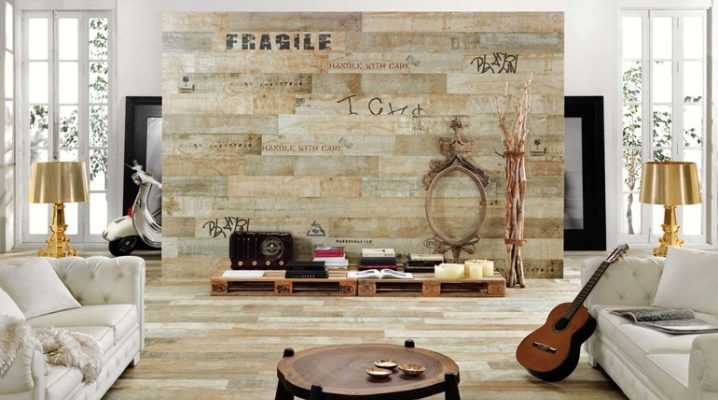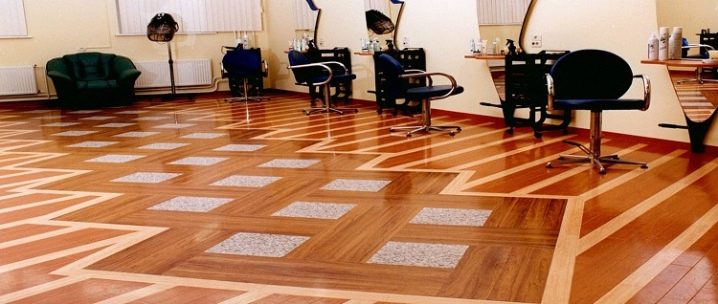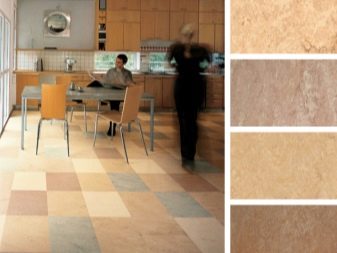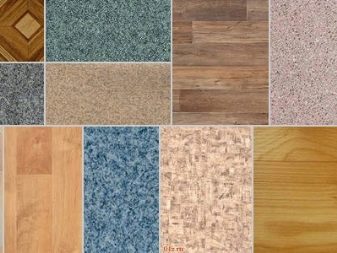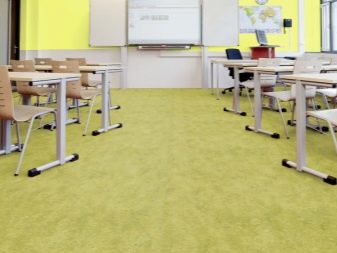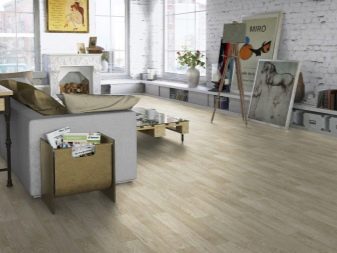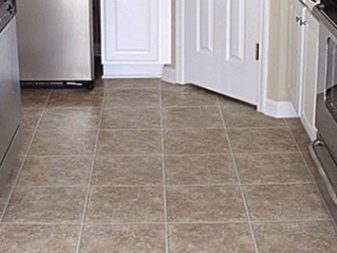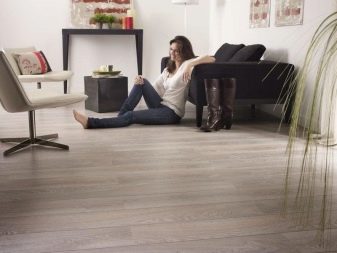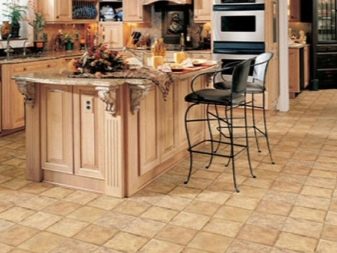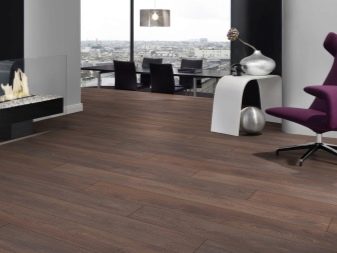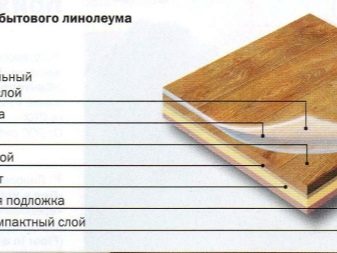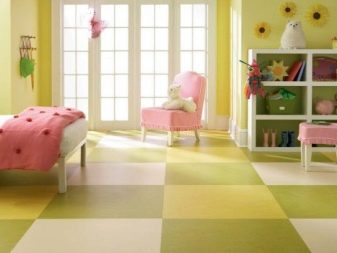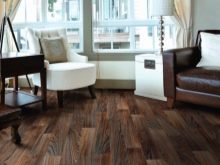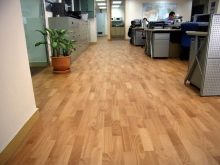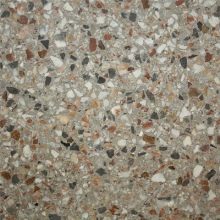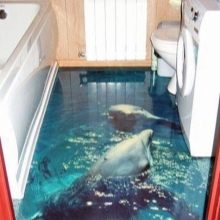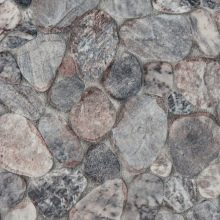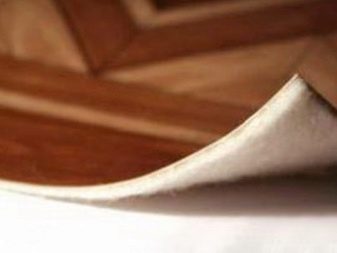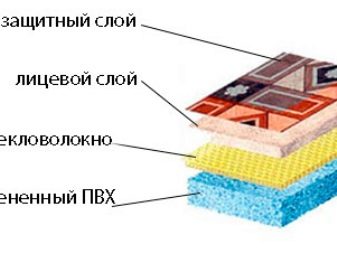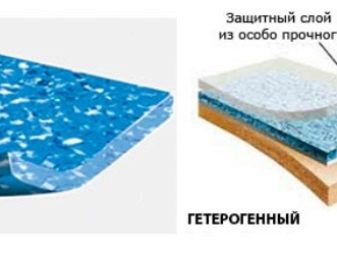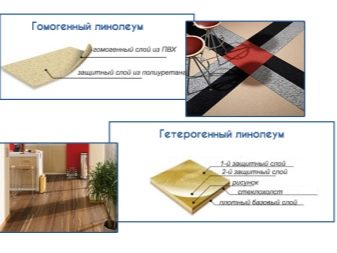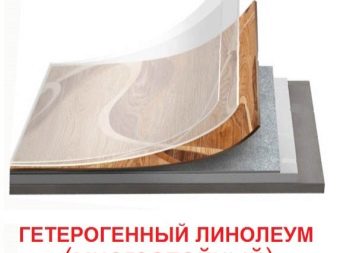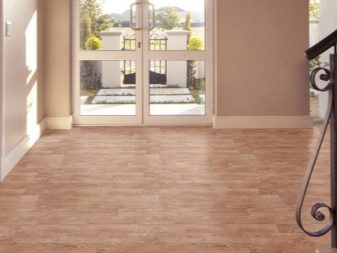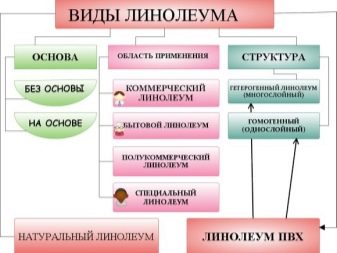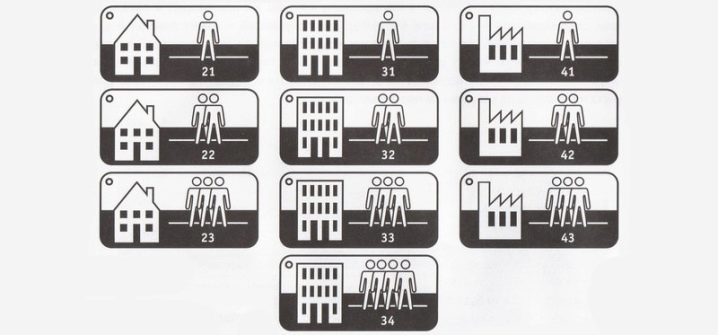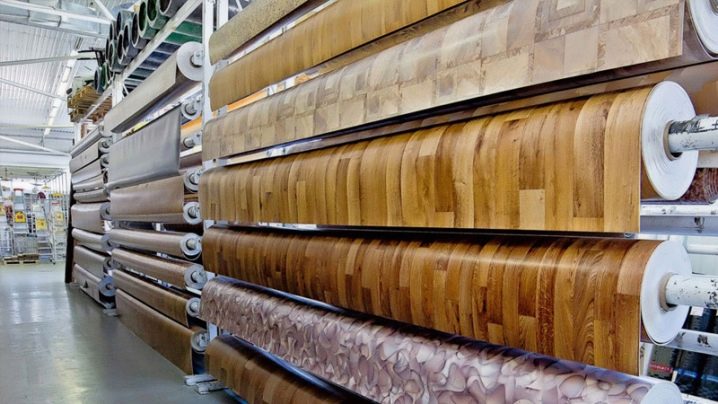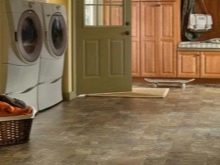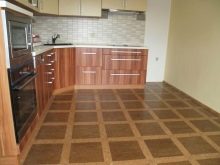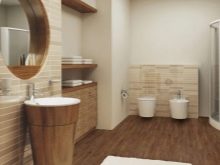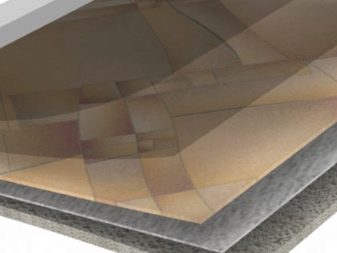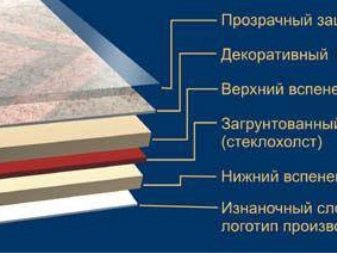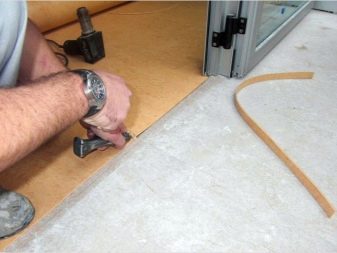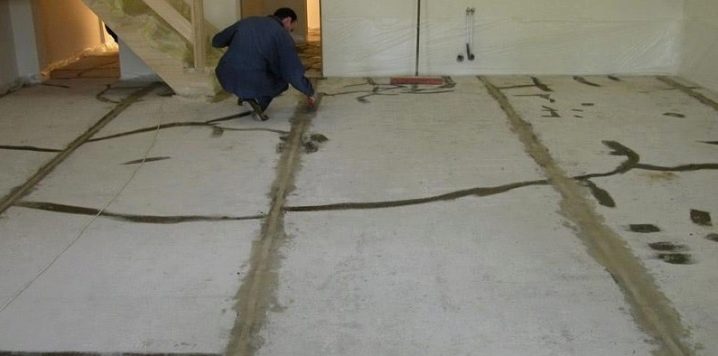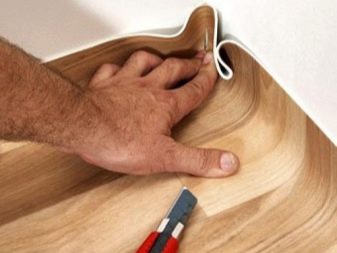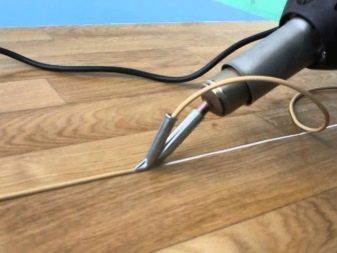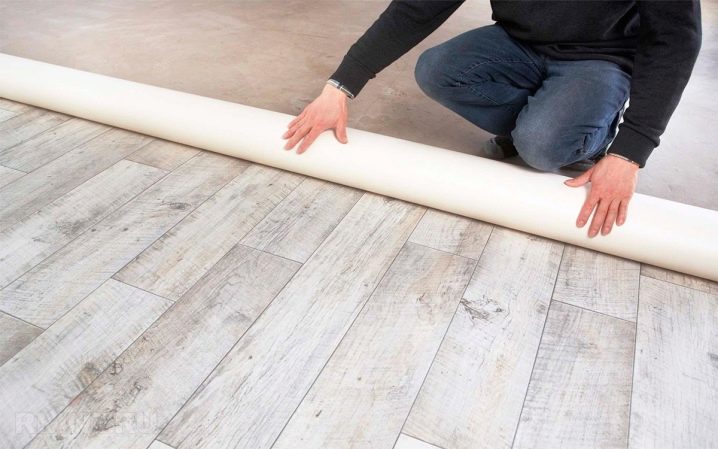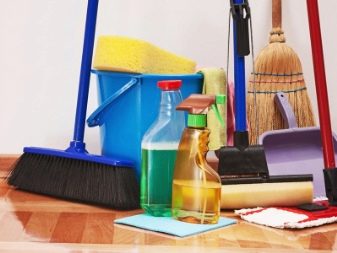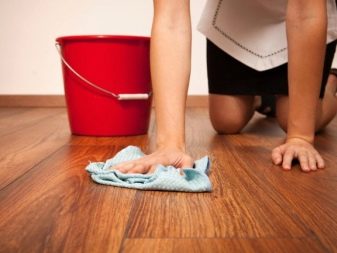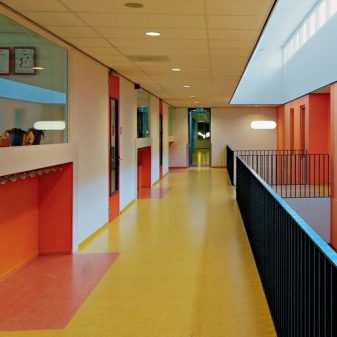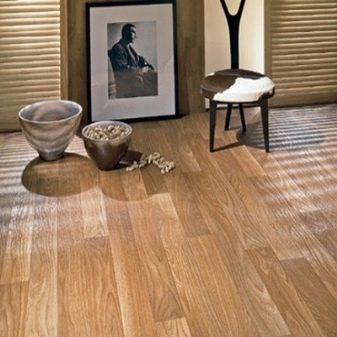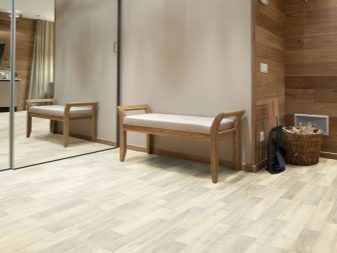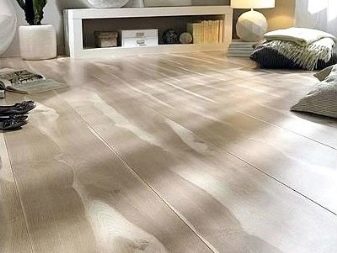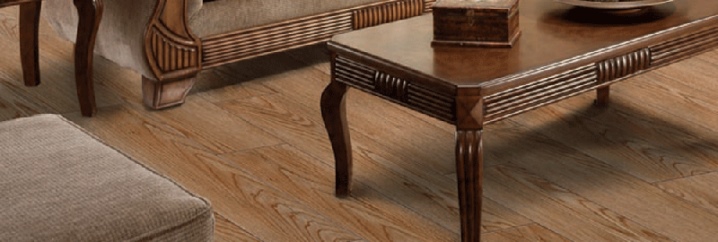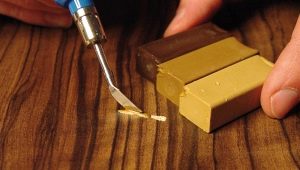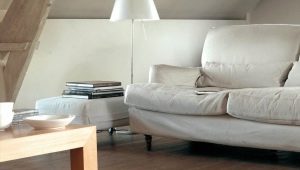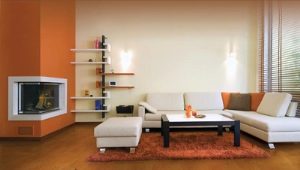Semi-commercial linoleum
When choosing a floor covering, many customers opt for linoleum, one of the most popular flooring materials. It is used almost everywhere, has a lot of advantages. Among the huge variety of products, semi-commercial linoleum is particularly in demand, the characteristics of which ensure long life and make the product worth buying.
What it is?
Semi-commercial linoleum is a type of flooring made of polymeric materials, which is intermediate between household and commercial class linoleum. It is an option developed by modern industry in order to reduce the deficiencies of building materials and increase their quality technical indicators.
Its performance is not inferior to the commercial counterpart, which is the best in the line of linoleum flooring. It has a high density, which is formed by fiberglass.
The material has another name - "Office"After all, such linoleum is excellent for places with high traffic, having a structure resistant to mechanical damage and abrasion. Another name is the meaning of “reinforced type household linoleum”.
This floor covering is widely used in offices, clinics, kindergartens, shops, public institutions (cafes, salons, restaurants). It is a separate line of linoleum classes, combining the best qualities of household (classical) and commercial analogues. It is durable, resistant to intensive use coating, convenient and easy to lay.
Merits
Semi-commercial linoleum is an excellent material that has several advantages. In addition to being able to hide small cracks and irregularities in the floor, the coating:
- resistant to excessive wear;
- has antistatic structure;
- not subject to rotting and formation environment for microorganisms;
- unpretentious in the care and styling, does not absorb moisture, pollution;
- differs in the wide range of coloring and shades;
- possesses high sound and thermal parameters of isolation, absorbing noise and vibration;
- It has an acceptable cost, it is available for the main circle of consumers;
- is an indispensable attribute of creating a cozy atmosphere of the home;
- recognized as fire resistant material;
- has a long service life (at least 10-15 years).
This type of flooring is unique in that it is suitable for any room in the house, be it a bedroom, a kitchen, a nursery, a living room, a hall, or a corridor. Due to the possibility of applying a clear pattern, it allows you to decorate the floor with a different effect, imitating the surface under tiles, parquet, laminate, plank floor, natural stone, marble, etc.
This coating is able to satisfy different requests of customers, it is recognized as a rational expenditure of the budget and easy to install.
Minuses
Semi-commercial linoleum has several negative nuances, which include:
- synthetic components (not all customers like it, because they can cause allergies);
- cost increase per square meter with an increase in the thickness of the protective layer;
- large weight of the material (complicates transportation);
- low level of resistance to solvents, alkalis and fat;
- drying of the structure of the material with noticeable temperature changes, reduced elasticity and cracking.
It can not be called environmentally friendly material, and some brands do not recommend laying this material in the nursery.
Differences from domestic and commercial
Semi-commercial linoleum is the golden mean between the household and commercial counterpart. It is better than domestic and easier to commercial, while being a worthy option for flooring for the house, cottage, apartment.
Semi-commercial linoleum has a number of differences from analogs of other classes. It is stronger than domestic coating, so sharp heels, legs of chairs, rollers from furniture are not afraid of it. This linoleum is different in weight: if you compare a canvas with a size of 1 sq. M. m, the weight of semi-commercial coverage will be one and a half times more household and much less commercial counterpart.
Other parameters include resistance to stress and price: semi-commerce is more expensive than household coverage and cheaper than commerce. Also service life differs. Semi-commercial linoleum gets tired and outdated faster than it wears without losing the attractiveness of its appearance.
Such a canvas can be distinguished externally: it has a thickness of a protective layer from 0.3 to 0.6 mm (the difference is visible when looking at the side cut of the canvas).
Kinds
The model range of semi-commercial linoleum is various.Trademarks offer for sale a variety of options that can satisfy any customer preferences. The most popular varieties of flooring include linens:
- antistatic;
- fireproof;
- insulated;
- with 3D effect;
- with anti-slip protection.
According to the type of basis the material is divided into two types:
- on a felt basis;
- on foam basis.
Each type has its own characteristics and is designed for a specific type of room. The floor covering of semi-commercial class is divided into two types: heterogeneous (multilayer) and homogeneous type.
A heterogeneous material class consists of several components:
- protective, protecting the coating from abrasion;
- the finishing, giving to a covering an original pattern;
- bases for drawing thanks to which the pattern keeps;
- fiberglass, eliminating deformation and increasing strength;
- foamed base necessary for heat and noise insulation;
- layer marking indicating the ownership of a particular brand.
The homogeneous class of semi-commercial linoleum is characterized by the presence of a single layer with a uniform structure.In addition, the material is characterized by a relatively large weight, compared with a heterogeneous analogue. The disadvantage of coverage is not as attractive as heterogeneous: its aesthetic characteristics leave much to be desired. It does not have a protective layer, which is a significant disadvantage.
Wear resistance class
For convenience of choice, semi-commercial linoleum is marked with an indication of the class of wear resistance explaining its purpose. This allows you to buy exactly what you need, properly investing money. The classification includes 4 numbers (32, 33, 34, 41). The first number indicates the type of room:
- 2 - residential;
- 3 - office;
- 4 - production.
The second (substituted number) explains the load on the surface:
- 1 - low;
- 2 - average;
- 3 - above average;
- 4 - high.
Based on the above, it turns out:
- 32 - half-commerce for the back room, closet;
- 33 - option for shop, office, corridor;
- 34 - an excellent material for home and areas with high traffic;
- 41 - a version for a house with a small cross and medium use.
For more convenience, trademarks offer a visual classification system, with intuitive icons and pictograms along with numbers.
Dimensions
Due to the fact that there is no specific GOST for this type of product, manufacturing companies have developed their own standards, which allow determining that this material belongs to the semi-commercial class of floor coverings.
The standard indicators characterizing the canvas include:
- the total thickness of linoleum, comprising from 2 to 4.5 cm;
- the thickness of the protective layer (top of polyurethane), ranging from 0.3 to 0.6 mm;
- weight per square meter, equal to from 2 to 5 kg;
- web width, ranging from 1.5 to 4 and 5 meters;
- abrasion having an index of 10–15 g / sq. m
How to choose?
Choosing semi-commercial linoleum may seem like a daunting task. In fact, everything is simple and clear:
- color and pattern is selected individually, based on their own preferences;
- the size of the canvas should correspond to the area of the room (preferably a single solid sheet);
- if the humidity of the room is large (balcony, kitchen, bathroom), it is better to prefer a coating with a PVC base, the option on felt is good for “dry” rooms;
- it is unacceptable to save paintings with a pattern, it is important to take into account its direction and size, otherwise you can spoil the overall look of the interior;
- the greater the thickness of the protective layer, the better the resistance to mechanical damage and greater durability;
- compatibility of the coating with the “warm floor” system is welcomed;
- composition and appearance matters: in the priority of linoleum with a high level of color stability and the addition of antibacterial components;
- The price of the question depends on the degree of rigidity of the lower layer: the smaller the porosity of the structure, the higher the cost.
At purchase it is worth paying attention to material with an average thickness and a thick protective layer. Cloths 3-4 mm can not be considered: through the bottom will be visible all the irregularities of the floor.
When choosing a flooring for an apartment or a country house, it is better to proceed from practical considerations: the white color will lose the attractiveness of its appearance rather quickly. You should not dress up their kitchen or hallway (high-traffic areas).
Piling
The procedure for laying semi-commercial linoleum is no different from the standard. If desired, everyone can handle it. It is simple and involves several steps:
- foundation preparation;
- linoleum preparation;
- taking measurements;
- adjustment of the coating according to the required measurements;
- docking;
- sealing joints.
The principle of each master has his own. However, there are general rules. Laying is carried out on a dry and level basis. If the floor shows irregularities, cracks or remnants of old linoleum remove them, level the surface.
Linoleum can be laid on:
- old linoleum;
- plywood;
- concrete floor.
Each method has its own subtleties. If it is enough to just level the concrete floor, laying it on a wooden one cannot do without a layer of plywood. If the humidity in the house is large, the hardboard will not work, as it will gradually change the structure and rise up in waves, and no manipulations will save the floor from shifting. The variant with old linoleum is convenient in that in this case it will level the floor, being an additional substrate.
Measurements are carried out on the basis of the maximum values of the length and width of the floor of a particular room, taking into account the doorways and features of the area. To the obtained measurements add a small allowance (on the curvature of the walls and the junction of the coating).
The fitting is carried out taking into account the direction of the pattern: the linoleum is laid out with a print up and adjusted to the features of the floor, cutting off all the excess with a knife around the perimeter.If the walls are smooth, it is enough to leave 0.5 cm at the edges.
If the canvas is not solid (for example, laying in the corridor), do not do without joining the pattern (provided that the linoleum pattern is the same in different rooms). Both layers overlap, combining the drawing, then cut through with a knife, accurately removing the excess two layers at the same time. The sealing of the seam (cold welding) is performed with a special glue with a sharp tip. It is important to ensure that the glue does not fall under the seams: this can lead to the formation of uneven seam and will cause its destruction.
Masters believe that in cases where the floor space exceeds 20 square meters. m, linoleum is better to stick to the base. The process consists in applying a special solution and crushing the surface of linoleum with heavy furniture.
When laying should take note: if the coating has a felt base, the substrate can not lay. If the base is made of foam, you can not do without a substrate.
How much should otlezhatsya?
A feature of semi-commercial linoleum is the need for preliminary preparation. It can not be laid immediately: it is important that he lay for at least 2 - 4 days in a horizontal position without bends and creases.This time will be enough for the surface of the coating to even out, to take the desired shape and not to impede the installation.
What to wash?
Despite the fact that semi-commercial linoleum is easy to clean, it is important to remember: careful operation is the basis of durable use. When spots appear, they will be removed immediately, without waiting for them to “grow” into the structure of the material and become part of the pattern.
Regardless of the durable top layer of linoleum, it is better to stick special protective stickers to the furniture legs. Everything else is simple:
- Linoleum is regularly rubbed with a damp cloth;
- if there are greasy spots on the surface, a soap solution will help;
- It is unacceptable to use rigid sponges, with intensive use of traumatic protective layer;
- abrasive cleaners can not be used for cleaning.
Ash must be removed immediately, sparks should not be allowed to hit the surface. Linoleum is better than laminate, because wet cleaning does not cause him any harm and can be daily.
Stamps and reviews
To have a more detailed understanding of semi-commercial linoleum, you can look at to manufacturers, marked by customer reviews and having a high rating:
- Armstrong - an international concern that produces a huge range of coatings with an attractive design, color variety, quality control at all stages of production, resistance to deformation and abrasion of coatings, moderate resistance to external factors and a mass of various patterns. The opinions of customers recognized the products as expensive and sometimes with the smell of “fresh repair”, which remains indoors for a long time.
- Grabo - Verngersky manufacturer offering quality semi-commercial coatings made according to improved production technologies from fiberglass, beeswax, rubber resins and linseed oil. Buyers call them one of the best, but limited in the range of outlets of our country and, unfortunately, having fakes, issued for the original product.
- Juteks - A Slovenian company, about 10 years of pleasing customers with linoleum with high quality indicators and an acceptable cost. Today, the assortment of half-commerce is represented by 5 collections with a multi-layered structure, a guarantee of the manufacturer and a long service life.Buyers celebrate a unique design, interesting drawings of paintings, allowing to diversify the style of the interior. However, the choice on the territory of our country is limited, and sometimes linoleum exudes a weak chemical smell.
- Tarkett - a corporation, known worldwide for a unique approach to production and high quality products. The brand is known for a variety of additional effect and includes coatings with anti-slip, anti-static, special water resistance, transport, homogeneous and heterogeneous lines, using natural materials in production along with synthetics. In general, a great product, but in some cases it has to stick to the floor.
- Komiteks Lin - a plant based in the Komi Republic, Syktyvkar, offering certified semi-commercial roll products on a felt basis, resistant to weight loads, moisture, household chemicals. Buyers note a good design, affordable cost, but incompatibility with the floor heating system and a low level of coverage.
In the next video you will clearly understand what semi-commercial linoleum is.
